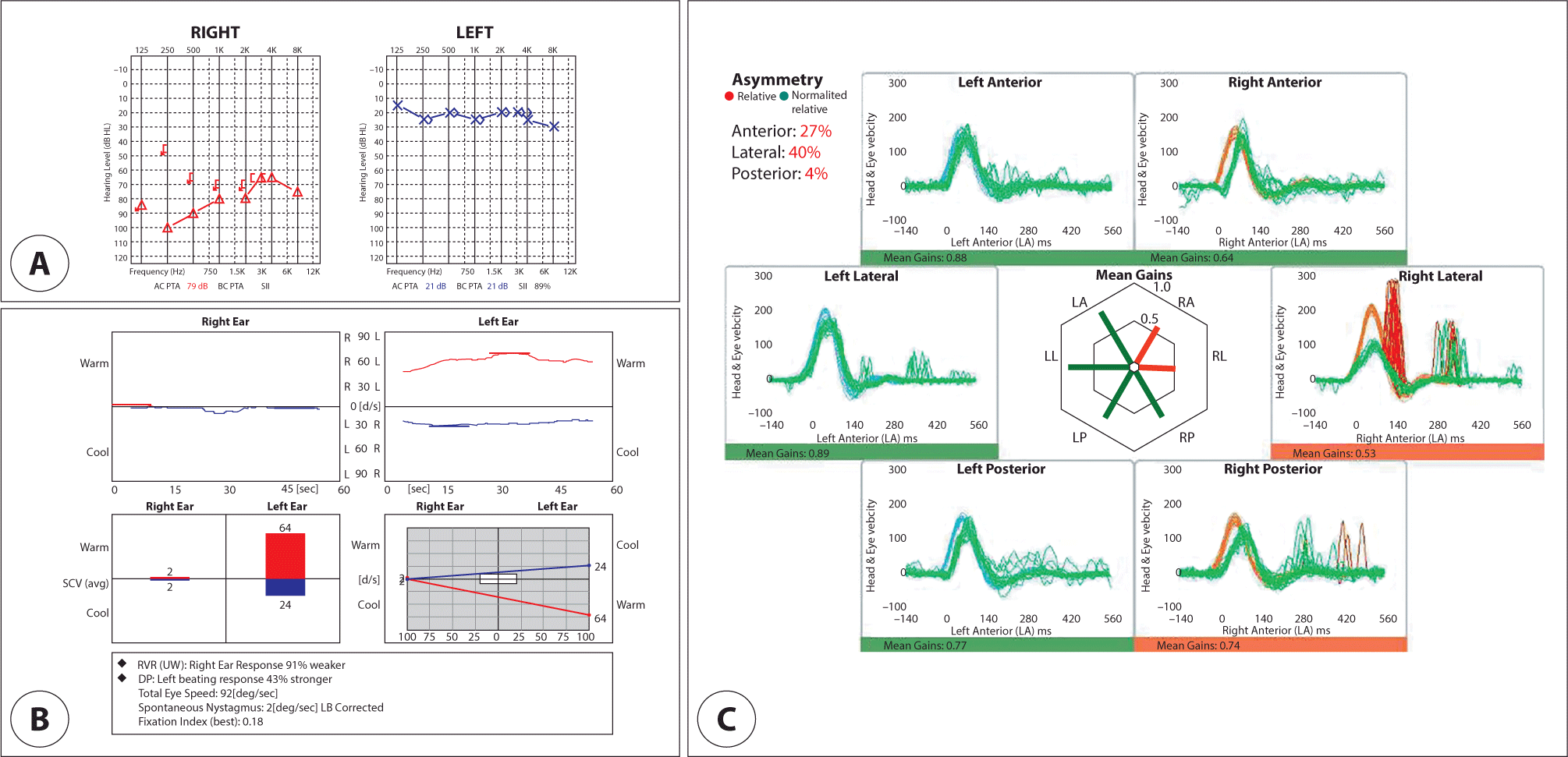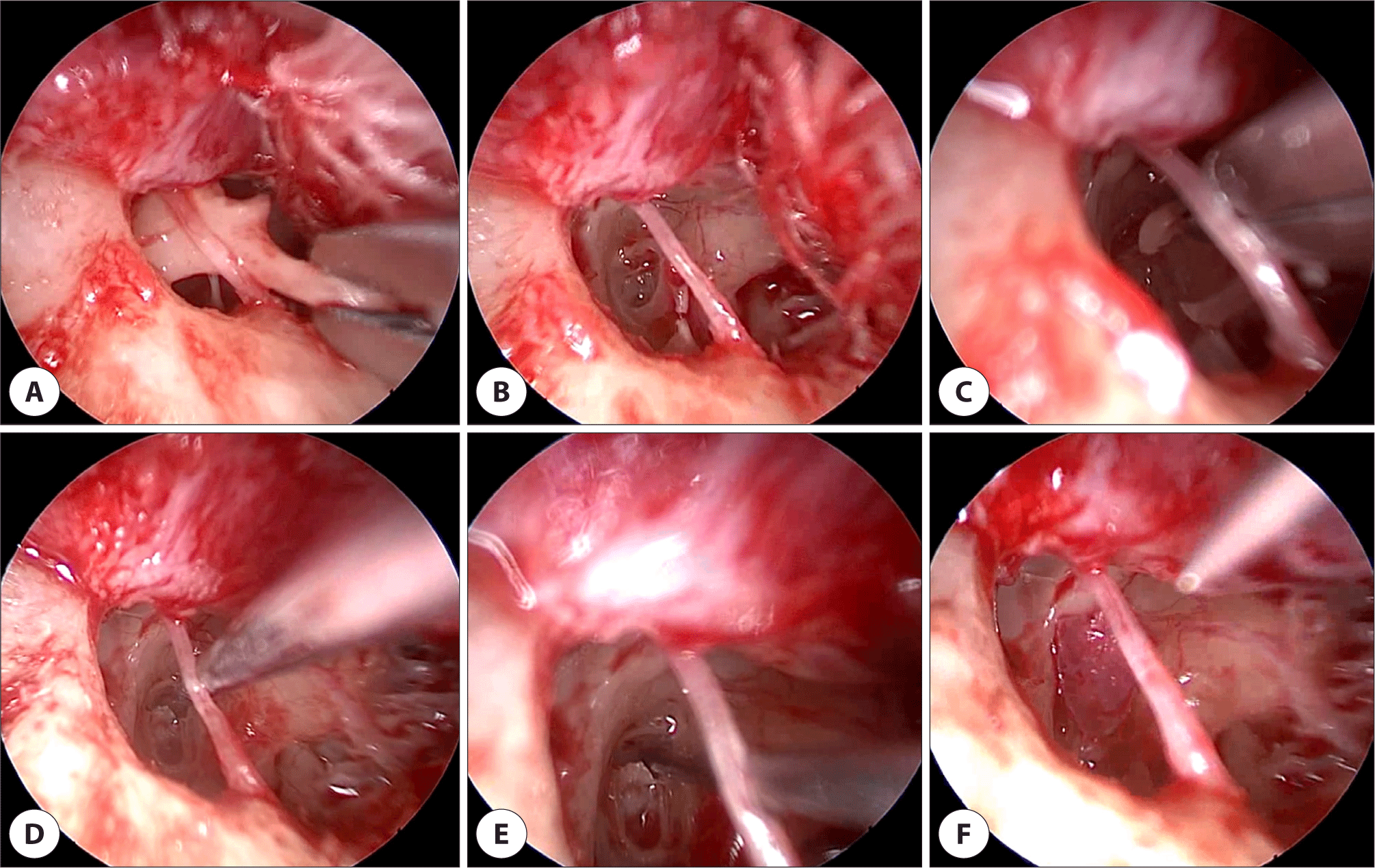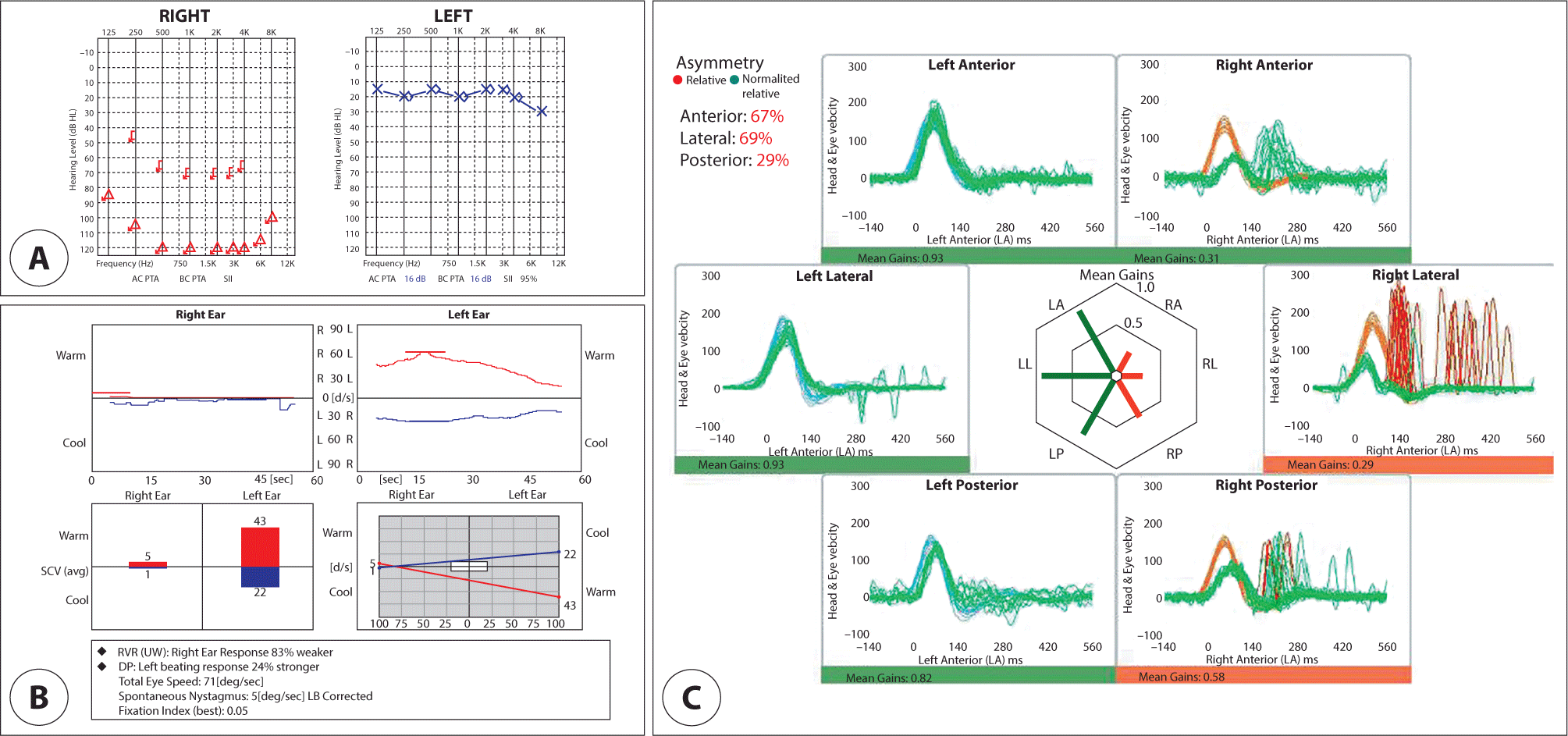Introduction
Meniere’s disease is a type of inner ear disorder characterized by distension of endolymphatic labyrinth of cochlea and/or vestibule.1,2) Since the disease affects a sense of balance and hearing, the clinical features of the Meniere’s disease usually include severe episodes of vertigo, tinnitus, hearing loss, and fullness sensation of the ear.3) Even though the duration of symptom tends to be varied, the episodes may last from 20 minutes to a couple of hours.4) For the treatment of Meniere’s disease, there is no one definite cure to relive all of the inner ear symptoms. Usually the managements start with medical treatment such as diuretics, diet reducing the sodium uptake and physical therapy to assist retaining of the balance.3,4) Previous studies reported that over 90% of the patients suffering from Meniere’s disease could be controlled by these conservative management, but the rest of them did not respond medical treatment.5) Surgical intervention is required once patients are irresponsive to conservative therapy, and gentamicin ablating vestibular hair cells can be a successful treatment option for those who failed the medical treatment.6,7) Since the ultimate aim of the treatment of Meniere’s disease is to control episodic vertigo attacks, a variety of new treatment options for vertigo have been recently introduced although they may hold vestibulotoxic effects causing irreversible hearing loss.7,8)
With the growing interest of transcanal endoscopic ear surgery known to remain the least trauma on patients, this approach has been previously adopted for labyrinthectomy for intractable Meniere’s disease.8) Even though gentamicin is usually applied through the intratympanic injection, we will introduce a case of gentamicin based chemical labyrinthectomy using endoscopic approach.
Case Report
A 44-year-old female patient visited our outpatient clinic in 2022 with uncontrolled dizziness and hearing loss which started about 15 years ago. She was previously diagnosed with right sided Meniere’s disease since more than two episodes of severe vertigo lasting more than 12 hours and fluctuating aural symptoms (hearing loss and ear fullness) of the right ear were present in 2007. The patient was initially treated with conservative management including diuretics, life style modification and the use of betahistine (24 mg/day), but vertiginous symptoms were not resolved. She also had been treated with two times of intratympanic dexamethasone injection and four times of gentamicin injection (once a week) before the acute vertigo attack happened. For intratympanic gentamicin injection, 80 mg gentamicin was mixed with 8.4% sodium bicarbonate (9:1) for pH control. At this point, she showed a 79 dB pure tone average (PTA) hearing loss on the right side while the PTA of left side was 21 dB (Fig. 1A). When the vestibular functions were assessed, a positive head thrust and a right canal paresis of 91% on the caloric test were shown (Fig. 1B, C). Even though she would lose her remaining hearing of the affected ear, she desperately wanted more certain treatment for resolve vertiginous symptoms. We decided to perform endoscopic chemical labyrinthectomy with gentamicin injection under general anesthesia, and there were no abnormal clinical findings on pre-operative temporal bone enhanced magnetic resonance imaging (MRI) image scan. During the endoscopic surgery, incus removal was done after a circumferential incision was made in the skin of the external auditory canal (Fig. 2A, B). Partial stapedectomy and perilymph suction out was done through oval window (Fig. 2C, D). After that, repetitive gentamicin (80 mg/2 mL) irrigation was carried out for 4 times, and the vestibule was filled with gentamicin (Fig. 2E). At last, the oval window was sealed with tragal perichondrium and glue (Fig. 2F).


There were no intraoperative or postoperative complications, and the patient recovered very well with a couple of days of mild dizziness. She was discharged after two post-operative days without vertiginous symptoms including dizziness, general imbalance, and oscillopsia. At the 3-month follow-up, she was pleased with the quality of her life without any vertigo attacks even though the complete hearing loss of the affected ear existed (Fig. 3A). When post-operative vestibular functions were assessed, a positive head thrust and a right canal paresis of 83% on the caloric test were shown (Fig. 3B, C). The patient has been under close observation for 19 months after the chemical labyrinthectomy without any vertiginous symptoms. It is classified as grade A (complete control) according to American Academy of Otolaryngology-Head and Neck Surgery on reporting of vertigo control in Meniere’s disease since she showed no episodes of vertigo on 18–24 months following the treatment.

Discussion
Treatment of Meniere’s disease remains difficult since about 10% of the patients suffering from Meniere’s disease are intractable to conservative management including drugs and diet.5) Once the patients fail to control vertigo attacks, more invasive treatment options should be considered. Surgical labyrinthectomy is undoubtedly an effective treatment, but it is only applicable to those who are tolerable to several hours of operation under general anesthesia and with little or no hearing on the affected side.9) Otherwise, gentamicin can be also used because it is not only effective to control vertigo but also less toxic to hearing system even though it still carries a small risk of worsening hearing loss.9,10) In fact, gentamicin is known to be more vestibulotoxic than cochleotoxic as it mainly damages the vestibular hair cells after entering the round window and oval window.11)
The protocol of chemical labyrinthectomy using gentamicin varies widely to achieve more successful control of vertigo, but the way delivering gentamicin into the inner ear is usually intratympanic injection. Intratympanic injection is definitely one of the most minimal invasive techniques and beneficial that it can be performed in outpatient settings.12) However, there is a limitation that it takes time for gentamicin to permeate perilymph and endolymph of the inner ear and the actual amount of gentamicin absorbed into round window and oval window is not checkable. On the other hand, gentamicin irrigation via endoscopic approach can be a more effective way for post-surgical symptom improvement since it leads to more definite and rapid ablation of vestibular hair cells caused by gentamicin.
Herein, this case report shows the attempt of chemical labyrinthectomy using gentamicin via endoscopic approach rather than intratympanic injection. Repetitive gentamicin irrigation and filling up with gentamicin after partial stapedectomy and perilymph suction out was performed in a 44-year-old patient with uncontrolled Meniere’s disease. The post-operative course was satisfactory as she was well-recovered from vertiginous symptoms. Even though hearing loss may be worsened after the procedure, endoscopic chemical labyrinthectomy using gentamicin irrigation and fill-up in the perilymph space is definitely anticipated to maximize the vestibulotoxic effect of gentamicin rather than intratympanic injection.
